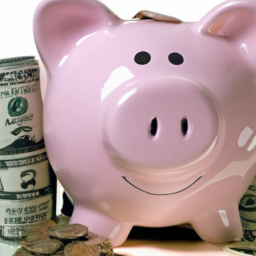After over a year of interest rate hikes, savers are finally seeing the benefits with fantastic rates on their high-yield savings accounts. A high-yield savings account is a type of savings account that typically offers a higher interest rate than a traditional savings account. These accounts are often offered by online banks and credit unions, and they can be a great way to earn more on your savings.
One recent development in the high-yield savings account world is Apple's partnership with Goldman Sachs to offer a new savings account. Within four days of opening, the account reportedly brought in over $1 billion in deposits. This has caught the attention of the CEO of at least one digital bank, who is keeping an eye on the competition.
If you're looking to earn a high return on the cash sitting in your checking account, a high-yield savings account may be a good option. But with so many options out there, how do you choose the best one for you? Here are some things to consider:
-
APY: The annual percentage yield (APY) is the amount of interest you'll earn on your savings over the course of a year. Any high-yield savings account you choose should have a great APY, but keep in mind that rates can change over time.
-
Fees: Some high-yield savings accounts charge monthly maintenance fees or other fees. Make sure you understand all the fees associated with a potential account before you sign up.
-
Minimum balance requirements: Some high-yield savings accounts require a minimum balance in order to earn the advertised APY. Make sure you can meet any minimum balance requirements before you open an account.
-
FDIC insurance: Make sure any high-yield savings account you consider is FDIC-insured. This means that if the bank were to fail, your deposits would be insured up to $250,000.
-
Other features: Some high-yield savings accounts offer additional features, such as ATM access or mobile banking. Consider what features are important to you when choosing an account.
It's important to note that while a high-yield savings account can help you earn more than a traditional savings account, it may not be the best option for everyone. If you have high-interest debt, for example, it may make more sense to pay off that debt before focusing on saving.
Establishing a savings habit early on can help you out along the road, and where you save matters. A high-yield savings account can be a good option for short-term savings goals, such as building an emergency fund or saving for a down payment on a house. For longer-term savings goals, such as retirement, you may want to consider other investment options that offer a higher potential return.
On the face of it, putting your money in a high-yield savings account that pays 4% interest looks like a losing proposition when the inflation rate is 5%. However, the reality is that inflation rates have been much lower in recent years. Even with a 2% inflation rate, a high-yield savings account that pays 4% interest is still a good way to earn more on your savings.
In conclusion, a high-yield savings account can be a great way to earn more on your savings. When choosing an account, consider factors such as APY, fees, minimum balance requirements, FDIC insurance, and other features. Remember that a high-yield savings account may not be the best option for everyone, and that where you save matters depending on your savings goals. With a little research, you can find the best high-yield savings account for your needs.
